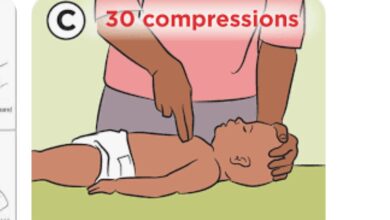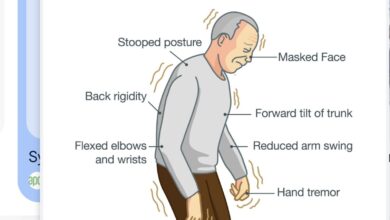PLANTAR FASCIITIS IS REAL PAIN!

“My Heel is Killing Me”
If you’ve ever had heel pain you know it’s a real nuisance. It hurts to run, it hurts to jump, it hurts to stand up from a chair, and in the morning, when you first get out of bed, it “kills” you! Those first steps feel like someone hit the bottom of your heel with a hammer. But later, after walking awhile, it eases up. The pain can go away, temporarily, but there often is a constant mild discomfort that’s a nagging problem. After sitting for awhile, when you stand up, the pain starts all over again. It’s very annoying and can be very debilitating.
My first experience with heel pain was in high school playing basketball. We wore Converse All-Star shoes with thin soles and no arch support, and every day after practice, I limped with heel pain. It persisted off and on for several years, but because I was young and healthy it went away.
Unfortunately, it returned when I was in my fifties. This time the pain was constant and unrelenting. I was running regularly in shoes, with no arch support, on paved county roads. I had pain in both heels, but at different times. The first heel bothered me for a year. The other heel for 15 months. For over two years I was very badly affected by heel pain. I quit running and focused on treatments that would cure it, but it hurt so badly I feared being unable to escape in an emergency situation.
What I had was called Plantar Fasciitis. It’s a traumatic stretching and partial tearing of the plantar fascia—the ligamentous structure that holds the heel to the rest of the foot. The plantar fascia is like a thickened bowstring. People with flat feet (flat or fallen arches) are prone to PF. Repetitive trauma, such as occurs with running or hiking, stretches the fascia and causes inflammation where it attaches to the heel. Microscopic tears often occur in the fascia, and worsen the inflammation. The inflamed fascia will sometimes calcify and form a bone spur, or bony projection on the heel. The heel spur is not the cause of pain. Instead it is the inflammation of the fascia at the site of attachment to the heel that causes the pain.
I really don’t remember having any lectures about heel pain in medical school nor was there any rotation with a foot specialist (Podiatrist) during my residency. The Orthopedic Surgery Department would have been the deliverers of that Information, but they acted like people didn’t have feet. They were focused on fracture care, back surgery, knee reconstruction, and later, joint replacement. I learned more about heel pain from having it myself than from any lecture or seminar. You may have had Plantar Fasciitis, too, because a lot of people do. In fact, ten percent of the general population has heel pain accounting for one million patient visits to doctor’s offices annually. Plantar fasciitis (PF) is the most common problem seen by podiatrists, so they are the experts in treating it. The incidence of PF increases with age (83% of cases are age 25-65), men have it more often women, and athletes, especially runners, are very susceptible. Between 4% and 22% of all runners experience it at some time.
Patients with PF are frequently obese, have flat feet, high arches, and tight calf muscles, and on x-ray have heel spurs. Ten to 20% of the general population has heel spurs, but only 5% of those patients have heel pain. Heel spurs, as mentioned previously, are NOT the cause of heel pain. Lots of people have painless heel spurs but evidence shows it’s not the spur that’s causing the pain. “Surgically removing a heel spur does not necessarily relieve the pain.”
All sorts of treatments are used to relieve PF, but 90% of cases resolve on their own in 9-12 months. My first episode lasted a year and the second fifteen months. Rest, ice packs, heel and Achilles stretching exercises, anti-inflammatory medications, soft supportive shoes with orthotic inserts, and cortisone shots (three times in each heel) all were tried. Finally, after a year of misery, the pain went away. The second episode occurred a year later in the other heel. In addition to those treatments, I wore a lower leg and ankle splint at night. Every night from November to March the plantar fascia was stretched by holding my ankle in a flexed-up position. I faithfully wore that splint, and eventually my heel improved. Surgery was, and is, an option (endoscopic plantar fascia release), but outcomes from that aren’t always as good as expected.
Of course, other things can cause heel pain, too. Rheumatoid Arthritis, Achilles tendinitis, Achilles tendon rupture, bursitis, osteomyelitis, Paget’s disease, peripheral neuropathy, sarcoidosis, and fracture are some, but Plantar Fasciitis is the most common diagnosis.
Since the second episode I’ve had no further problem with PF. My feet still pronate (are flat), and I still have bone spurs on each heel, BUT I NEVER FAIL to wear the orthotic shoe inserts my podiatrist made for me. I never go barefoot and wear shoes everywhere. One episode of Plantar Fasciitis in a lifetime is enough, and if you’ve had it you know what I’m talking about.
References:
- painscience.com/tutorials/plantar-Fasciitis
- mayoclinic.org/diseases-conditions/plantar-Fasciitis
- American Family Physician Vol.63, Number 3, February 1, 2001
- Orthoinfo.aaos.org/en/diseases—conditions/plantar-Fasciitis-and-bone-spurs
5. lermagazine.com/article/the-epidemiology-of-plantar-Fasciitis
6. American Academy of Podiatric Sports Medicine: “Plantar Fasciitis: Treatment Pearls” by
Douglas Ritchie Jr, DPM.





What a great article !! You covered it very well.
Thanks,
J
Thanks, J.